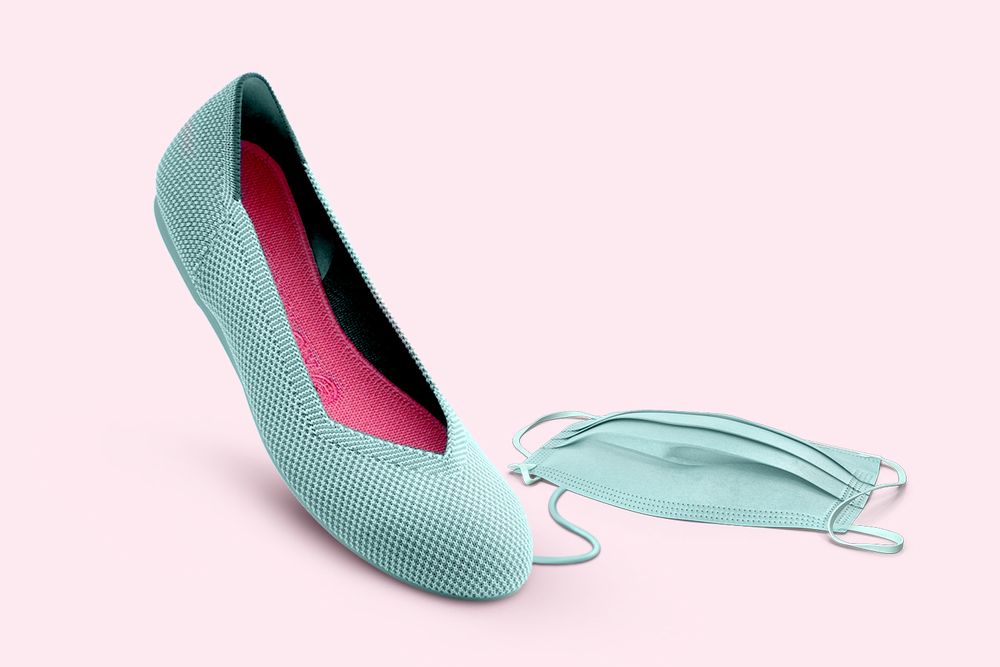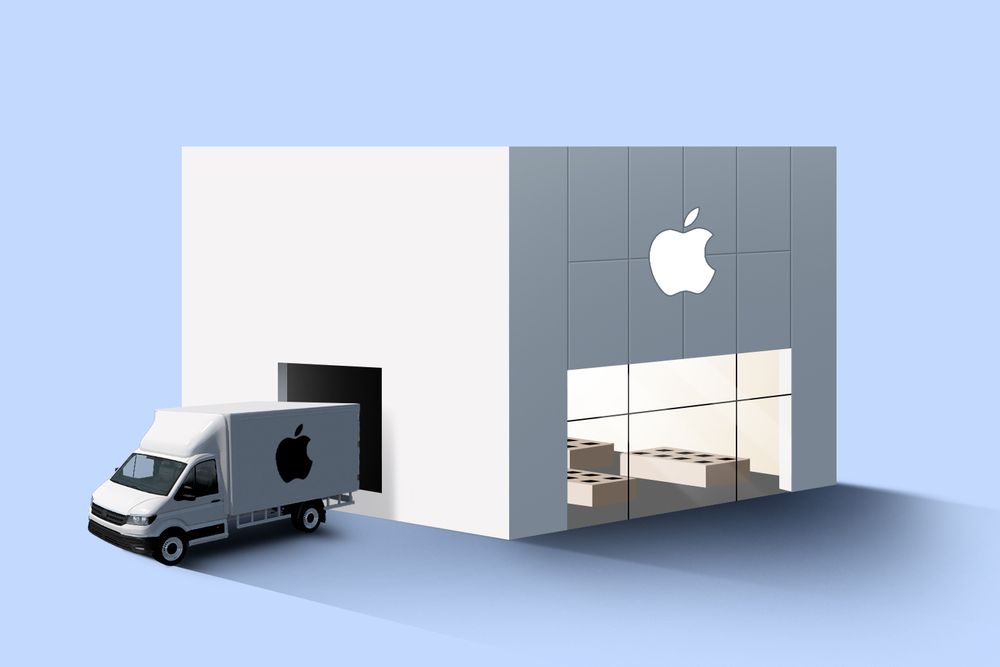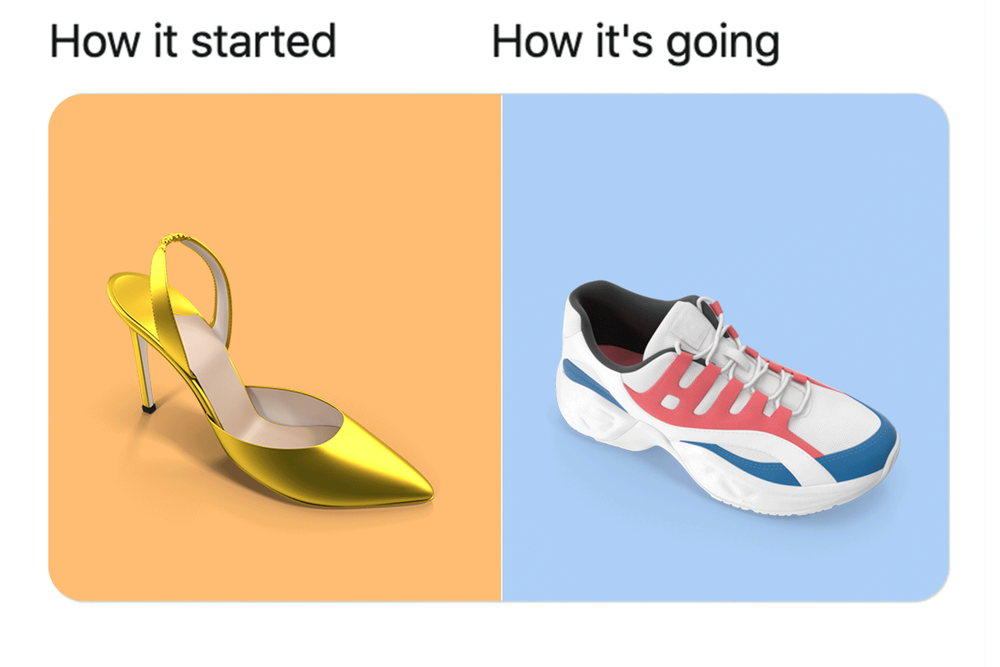|
Welcome back, and happy New Year.
I’m probably not the only one with a fuzzy brain after a few days off. So we’ll start 2021 with the SparkNotes of the about-faces, transformations, and—all together now—pivots retailers made over the past 365 days.
Regular news programming will hit your inbox again on Wednesday. 
In today’s edition:
- The item(s) of the year
- New fulfillment options
- Apparel’s great divide
— Halie LeSavage
|
|

Francis Scialabba
|
Before it became clear the pandemic would last months instead of weeks, retailers pulled the same switch: reallocating supply chain resources to emergency supplies.
Hands on
Hospitals reported a dire need for sanitation supplies as Covid-19 cases rose and traditional brands like Purell and Clorox ran out of inventory. So some of the largest brands in beauty retail—LVMH, L’Oréal, Coty—swapped perfume and personal care production for hand sanitizer. Many of their supplies were sent directly to health officials through the spring.
- Beauty brands already had the ingredients, machinery, and packaging to make the swap, so it wasn’t as costly converting to an entirely new category.
- Months later, it’s unclear how much of production is still dedicated to relief efforts.
What about consumers? Brands that already traded in clean hands (Bath & Body Works) had the supply to meet hygiene-driven demand. Then indie brands developed their own takes by May, anticipating lasting category demand.
It was a prescient move: Consumer hand sanitizer sales were projected to pass $1 billion in 2020, doubling 2019’s total, per Kline research.
Another entrant: 800+ U.S. distilleries repurposed machinery built for craft whiskey and bourbon for the hospital hand sanitizer surge. But the transformation was short-lived in many cases.
- Distillery owners told the NYT that demand from medical professionals was “frenetic” at the start of the pandemic, allowing some small businesses to recoup the revenue they lost from tours or drink sales.
- But demand dried up when the traditional players (Purell) rebounded from spring shortages to resupply hospitals. Some distilleries said they were left with thousands of gallons of excess inventory.
Heads up
We’re all too familiar with how masks went from an emergency room product to a fixture on every site’s accessories section. Since it’s 2021 and my leaving-the-house checklist still goes “keys, wallet, mask,” the product's ascent is worth revisiting.
At the start...retailers cut and sewed face masks to fill shortages for healthcare workers. But consumers needed them too—and a hybrid relief effort/cottage market was born. Most brands released their take on a face mask to stay afloat.
- From March to April, face mask listings at retailers jumped 400%, per retail analytics firm Edited.
- Rothy’s, the DTC footwear brand, allocated 30% of production to making masks. It also recruited 15+ brands to join an Open Innovation Coalition for making medical PPE.
In the present...mask mandates haven’t rolled back yet, to the potentially temporary benefit of two very different business models.
- Mass retailers. One example: While Gap’s apparel sales have declined, its decision to product cloth face masks generated $130 million for the retailer in Q2.
- The smallest of small businesses, Etsy sellers. Since the start of the pandemic, homemade mask makers have together raked in millions in revenue.
Looking ahead...with vaccinations making their way across the world, it’s unlikely that these side hustles will last until 2022. But these shifts demonstrated the importance of flexible supply chain operations, at least to keep the lights on.
|
|

Francis Scialabba
|
At least five years of e-comm growth happened practically overnight last year. But retailers hardly abandoned brick and mortar.
The brands that outwitted, outlasted, and outplayed mass store closures used their square footage to optimize their e-comm. Here are the two experiential pivots that’ll become permanent moves.
Everything delivered. At the top of the pandemic, same-day delivery services were the purview of gig grocery firms and Amazon—and they fetched more than $8 billion in monthly sales beginning in May. Naturally, non-grocery retailers wanted in.
- Instacart, ahead of a forthcoming IPO, led the pack: It’s partnered with 500+ brands, notably Dick’s Sporting Goods, Sephora, and Best Buy.
- Others are catching up. Postmates is piloting apparel and beauty deliveries; Shipt is also signing new non-grocer partners, including Build-a-Bear.
Curbside pickup. Shoppers want their items same-day, as well as a trip outside the house. Stores want to save on last-mile delivery costs. Enter: The 2020 pickup renaissance.
- Many superstores had curbside pickup previously, but the pandemic incentivized store renovations and app updates to accommodate more orders.
- What some DTC brands lacked in scale, they made up in style, via flourishes like curbside takeout menus (Stoney Clover Lane) and scannable window displays (The Sill).
These updates have hangups: Online fulfillment through store inventory thins out skus for everyone. Store staff need retraining to handle two forms of fulfillment at once. But once shoppers learn to expect convenience, they’ll want more.
|
|

|
Coming in hot on the heels of a record-setting e-commerce year, 2021 poses aggressive revenue goals for e-commerce and marketing leaders everywhere. But how can brands and retailers own that potential?
Try a partnership with Listrak.
Listrak is the digital marketing platform that delivers results for 1,000+ leading retailers and brands like Vineyard Vines, Kendra Scott, Uncommon Goods, and Tula Skincare.
Plus it’s the only company that provides a single, integrated platform for best-in-class email, SMS, identity, triggers, and personalization—all the things you need to win with your customers.
Driven by a team of retail marketing experts who work as an extension of your team, Listrak delivers results in accelerating growth and dramatically increasing revenue.
Check out Listrak here.
|
|

Will Varner
|
Last January, fashion editors predicted you’d see crochet bikinis and hot pants on sidewalks across the country come spring. They were only a few hundred hangers off.
The backstory: When travel halted and workforces went virtual, shoppers turned their backs on conventional dressing to embrace sweatpants and cashmere socks.
- J.Crew, Tailored Brands, and Ascena were pushed into bankruptcy, in part by focusing on formal styles.
- NPD analysts told Bloomberg sales of dress shoes may never rebound after Covid-19 turned shoppers on to slippers.
The new fit: Brands that wouldn’t be caught saying “drawstring waistband” in 2019 suddenly added athleisure to their lineups in 2020, or announced their intentions to do so. Many said their plans had been in the works for years. Some examples:
- DTC brands like Summersalt and Solid & Striped, both of which launched with an emphasis on swimwear, expanded into athleisure.
- Mass market brands including American Eagle Outfitters and Old Navy increased their stretchy fabric buys.
- Brooks Brothers, heading back from bankruptcy, shared plans to incorporate more “athleisure” into its upcoming lineup.
Elastic adjustments may have helped individual brands, but they weren’t enough to salvage the entire apparel industry. Apparel sales suffered YoY declines from March to November, per U.S. Commerce Department data; foot traffic to apparel stores had declined 23% YoY in December, Placer.ai reported.
Zoom out: Worldwide, the pivot didn’t equate to profit. Fashion companies’ profits could decline up to 90% in 2020, down from a 4% rise in 2019, according to McKinsey Global Fashion Index.
|
|
|
Some retailers made changes so swift, they could be Grammy nominated. Here were a few I couldn’t not acknowledge in today’s edition.
- In 2019, seasonal workers were gift wrappers and mall Santas. In 2020, they were warehouse workers and e-comm engineering experts.
- Arfa Collective had prepped for months for its first product launch. What happened next set the bar for adjusting brand debuts in the coronavirus era.
- Lights off ≠ store closed. As online grocery orders grew, retailers converted their aisles to delivery-only dark stores.
|
|

Francis Scialabba
|
The three stories above taught us that the best laid line sheets can be destroyed in an instant. But it doesn’t hurt to make educated guesses about the year in retail ahead. Just in case.
- 3,500+ shoppers have spoken: about their grocery carts, their online/offline preferences, and their beliefs in a brand’s purpose. (New Consumer)
- Vibey lights. “Cocooning” layers. Kitchen shelfies. It’s the upcoming year in aesthetically pleasing consumer trends. (Pinterest)
- In 2021, some of CPG’s most innovative developments will start in the snack aisle. (Snaxshot)
- Here, six ways the Everything Store will expand its purview even further. Antitrust who? (Forbes)
- The warehouse rental wave hasn’t crested yet. This year, it could take down more former shopping centers with it. (CBRE)
|
|
|
2020’s minor retail plot twists could’ve come from Shondaland studios. See if you can ID the fake swerve from the strange but mostly true lineup below.
- Branch, the corporate office furniture proprietor, converted to selling home furniture.
- Mucinex, the nasal decongestant, became a loungewear designer.
- White Claw, the sparkling seltzer, developed disinfectant wipes.
- Stouffer’s, formerly of the frozen foods aisle, released its first “streetwear” drop.
Keep reading for the answer.
|
|
|
Catch up on the Retail Brew stories you may have missed.
|
|
|
3. Nope, White Claw stuck to what it knows best.
|
|
|
Written by
@halie_lesavage
Was this email forwarded to you? Sign up here.
|
ADVERTISE // CAREERS // SHOP
Update your email preferences or unsubscribe here.
View our privacy policy here.
Copyright ©2020 Morning Brew. All rights reserved.
40 Exchange Pl., Suite #300, New York, NY 10005
|
|









